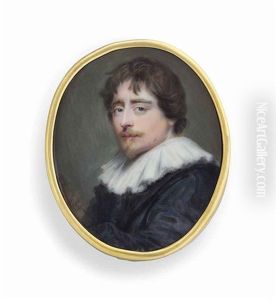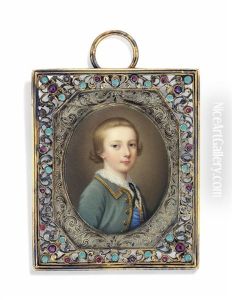Gervase Spencer Paintings
Gervase Spencer is a somewhat enigmatic figure in the history of British art, primarily known for his work as a miniaturist during the 18th century. Born around 1715, details of his early life are scarce, and much of what is known about Spencer comes from the legacy of his artwork rather than comprehensive historical records. Despite the mystery surrounding his early years, it is clear that Spencer became one of the prominent miniaturists of his time, contributing significantly to the development of miniature painting in England.
Spencer's career as an artist began to take shape in the 1740s, during a period when the demand for miniature portraits was increasing among the British gentry and aristocracy. These small, personal portraits were highly sought after for their intimate portrayal of the subjects, often carried as keepsakes or given as gifts. Spencer's work is characterized by its delicate brushwork and attention to detail, qualities that made his miniatures highly prized by his contemporaries.
Unlike many of his peers, Spencer did not limit himself to painting only the wealthy; his extant works include portraits of people from various social standings, indicating a broad clientele. This versatility not only demonstrates Spencer's skill as an artist but also provides a valuable glimpse into the social fabric of 18th-century Britain. His technique involved the use of watercolors on ivory, a practice that became the standard medium for miniature painting during this period.
Gervase Spencer's contributions to the art world were cut short by his untimely death in 1763. Despite his relatively brief career, he left behind a significant body of work that continues to be studied and appreciated for its artistic merit and historical value. Spencer's miniatures are now housed in various collections and museums, serving as a testament to his skill and the enduring appeal of miniature portraiture.
The legacy of Gervase Spencer is that of an artist who excelled in a specialized field, capturing the likenesses and personalities of his subjects with a precision and sensitivity that remain compelling to this day. His work provides a fascinating window into the past, offering insights into the people and the cultural milieu of 18th-century England. Spencer's place in the annals of art history, while perhaps not as prominent as some of his contemporaries, is nonetheless secured by the quality and charm of his miniatures, which continue to enchant viewers with their miniature yet profound glimpses into a bygone era.

























